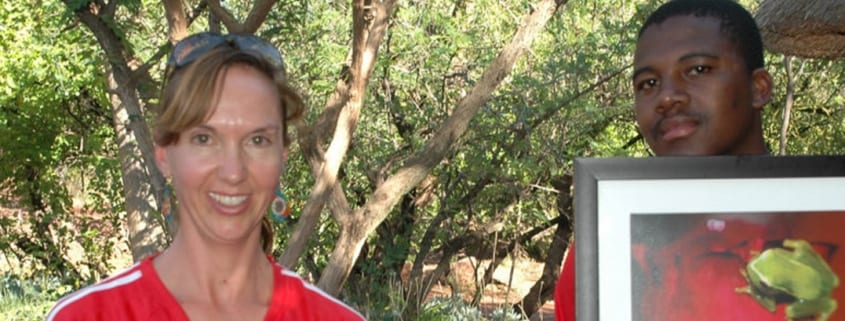Amphibian Conservation Team Recognized for Positive Impact on Threatened Species
Rainforest Trust’s partner Endangered Wildlife Trust (EWT) recently awarded its amphibian team “Program of the Year” in recognition of their efforts to save threatened South African amphibians.
Amphibians – including frogs, toads, salamanders and their lesser known relatives, limbless caecilians – are at the forefront of the global species extinction crisis. Despite this need for immediate action, there are few conservation organizations that have a program specifically dedicated to addressing this drastic decline. Rainforest Trust partner EWT is one of the exceptions, and in December its Threatened Amphibian Program (TAP) was awarded the organization’s “Program of the Year”.
“This [award] is a testament to everything that we have been working toward as a program over the past four years, most importantly the expansion of our habitat rehabilitation, community and social work,” wrote TAP Manager Dr. Jeanne Tarrant.
EWT’s TAP has been a leader in amphibian conservation efforts in South Africa, helping to not only raise awareness of the plight of these incredible creatures but also implement vital conservation actions needed to save them.
“What Jeanne and her team have been able to accomplish is really very special,” said Rainforest Trust’s Amphibian and Reptile Conservation Officer James Lewis. “Jeanne has not only found species thought to have gone extinct, but she is also engaging thousands of people in the protection of amphibians and really making a difference to the lasting survival of highly threatened species. She is an inspiration to myself and many others in the herpetofauna conservation world, and I’m extremely pleased to see that TAP has won the award this year.”
Rainforest Trust is currently working with TAP to utilize Biodiversity Stewardship Programs in South Africa to encourage landowners and communities to become active custodians of important amphibian habitats on their own properties. These efforts will lead to the establishment of formal protected areas for endangered species such as the Amathole Toad and Pickersgill’s Reed Frog.
The highland habitats of the Amathole Mountains are extremely rich in animal and plant species with high rates of endemism, including the Critically Endangered Amathole Toad. This species was presumed to be extinct, as it had not been seen for 13 years, until it was rediscovered in 2011 by Jeanne and her colleagues. Since this incredible rediscovery, EWT has worked toward the implementation of conservation measures in the region. Though their efforts have made significant progress, agricultural encroachment and commercial forestry have severely impacted the Amathole Toad’s range and that of other endemic species, as the area has no formal protection. To combat these threats, Rainforest Trust and EWT are working to create the Amathole Catchment Protected Environment.
In eastern South Africa, Rainforest Trust and EWT are working to establish two protected areas that will help safeguard key wetlands that are priorities for both water catchment functions and species such as the Pickersgill’s Reed Frog. These two sites will form part of the last stronghold for this Endangered frog, as 80 percent of the species’ population currently falls outside of official protected areas. The creation of Adam’s Mission Wetland Nature Reserve and Isipingo Wetland Environmental Conservation Reserve through land acquisition and Biodiversity Stewardship Programs are strong examples of how conservation organizations can work with local communities and stakeholders to protect indispensable sites for biodiversity and human well-being.




